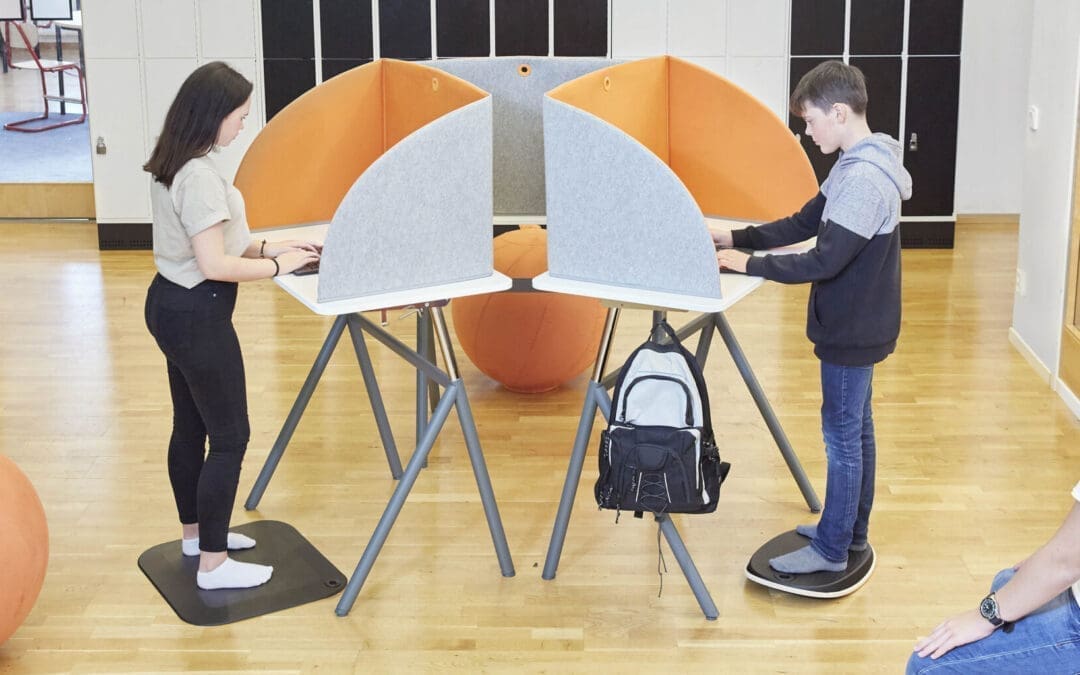Being able to create innovative, dynamic and enriching learning environments is a big part of the modern, future school. How we furnish a classroom affects how students experience and perceive the space but it also affects social behavior. There is currently a lot of research and studies on how the environment around us affects our brain health. How we read and code places has been important for our survival throughout our history. Generally speaking, we thrive in environments that challenge our brains in moderation.
Below are some examples of how to furnish and tips and suggestions that might be suitable for your classroom. It is the teacher who knows his/her classroom best and, of course, the number of pupils, size of the classroom, age of the pupils, etc. must be taken into account. It is important that students are involved and understand why and how they should stand and sit at StandUp DESK student desks for optimal ergonomics. One study found that the environment can affect students’ performance on standardized tests by up to 15%. By thinking carefully about how to furnish a classroom, several positive effects can be achieved.
Depending on the effects you want to achieve with your furniture, you can place the tables in different ways. Placing our standing tables in small groups promotes social interaction, while tables placed along a wall reduce the number of conversations. Since the tables are easy to move around, this allows users to customize the furniture according to the content, objectives and purpose of the lesson.
U-shape
A U-shaped placement increases student participation. There is more conversation, more questions are asked and students are more involved. This happens between student and student but also between student and teacher. In this position, it can also be observed that eye contact increases. It is very positive when someone speaks, tells a story or gives a presentation. In a class where the climate is unsettled among the students, the U-shaped placement is appropriate. In this placement, it is easy for the educator to keep in touch with all students and at the same time provide extra attention to those students who need it. Also a good location where lessons start and end at the same time. The screens are a good complement for working in directed concentration and the option of alternating between standing and sitting becomes a natural part of the work.
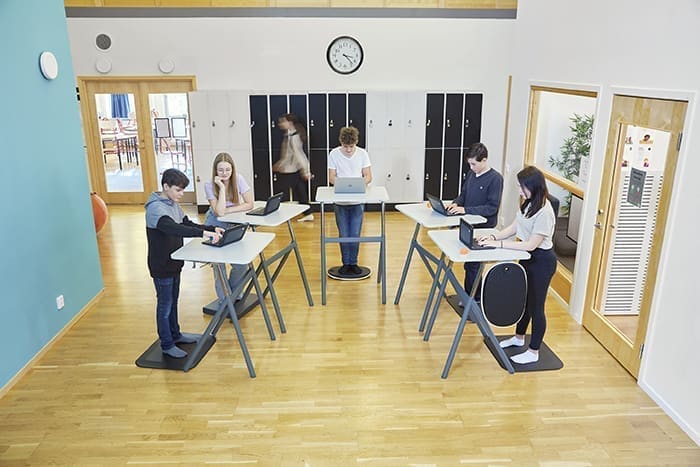
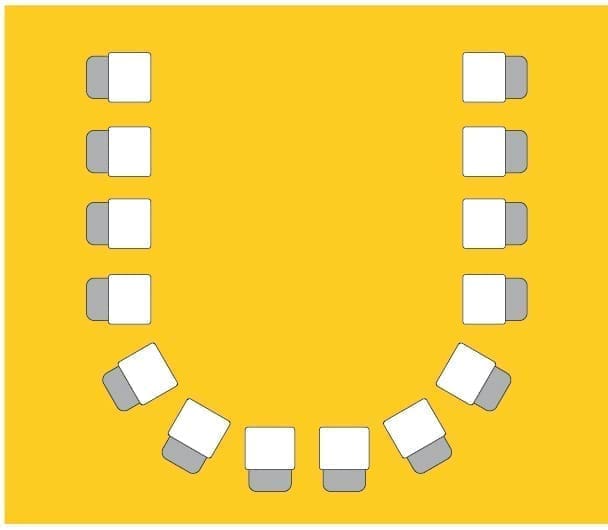
Bicycles
Placing the standing desks in rows encourages students to work more independently. In this placement, it is usually easier to increase the distance between tables, which can help when a lot of directed concentration and focus is required. Similarly, the distance between tables can make it easier to read each other’s facial expressions, gestures or expressions. It can help a student with difficulties in reading emotional expressions, etc. A distance of about one meter is usually sufficient to read each other easily. That way, we don’t have to move around to get the full picture. Since the student has a distance between them, the environment is not affected and the student chooses to sit or stand. This placement is suitable for briefings, presentations, independent work, etc.
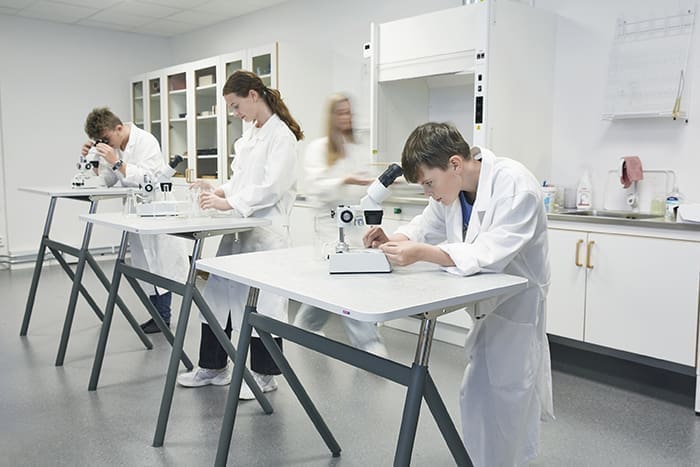
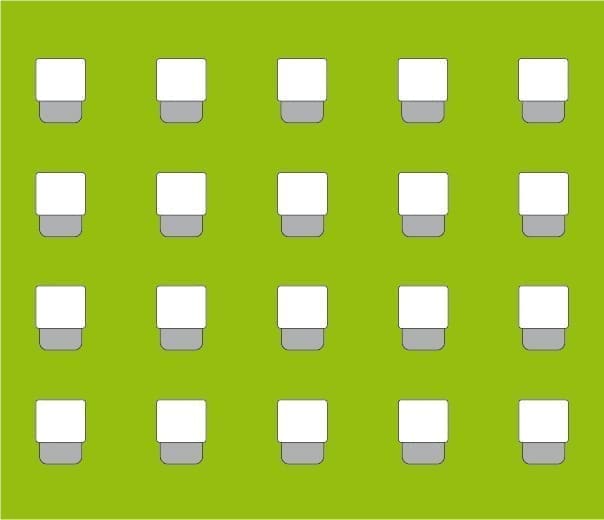
Activity-based
In classrooms where the learning environment is designed with an activity-based approach, the tables play a very good role. It is usually best to place the tables in a corner. In some cases, the other tables in the classroom may be ordinary benches/tables. In the corner, people can take turns using the standing tables as an alternative to natural movement. This placement is well suited to self-employment, e.g. work schedule. Research shows that after 30 minutes of sitting still, the brain goes into hibernation mode. The body signals that it is time for a break and recovery and our ability to concentrate decreases. By standing up at regular intervals, you release new energy so that you can concentrate again. When working at the StandUp tables, it is very important to talk to students about how their bodies feel when standing up and sitting down. Why we need to move and what happens in our brain and body when we stand up. By creating this awareness among students, we increase their confidence in their own abilities and their ability to influence their learning and well-being.
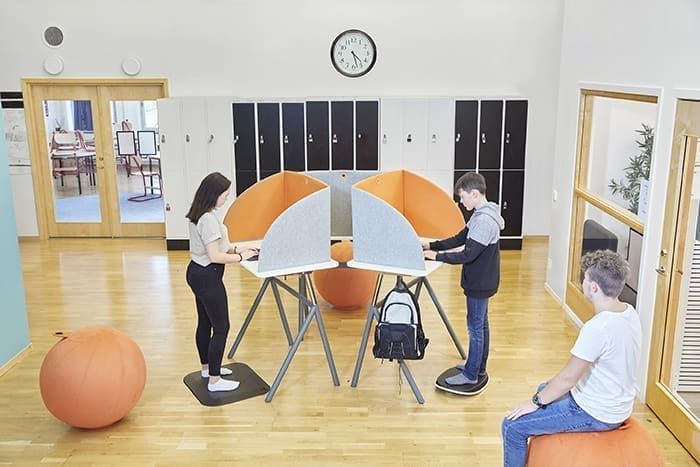
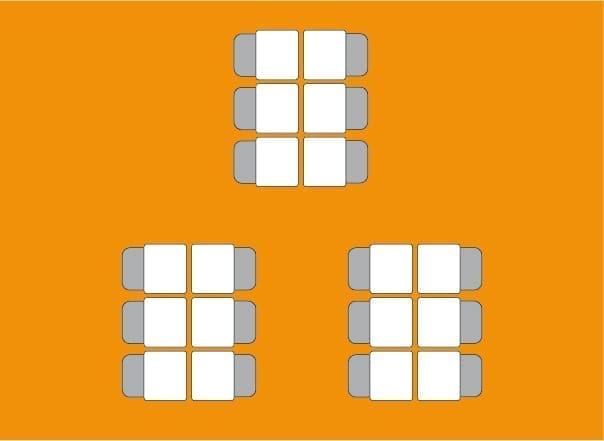
Group
For group work and workshops, the height-adjustable tables are placed in groups. They facilitate cooperation and participation and provide a good basis for learning together. If we work actively to create good relationships in a positive learning environment, our brains relax and recover, resulting in more creativity and problem solving. This is a very good arrangement for students to revise with each other and explain their thinking to each other. It becomes a natural place to express yourself orally and provides good practice in standing and speaking in front of small groups.
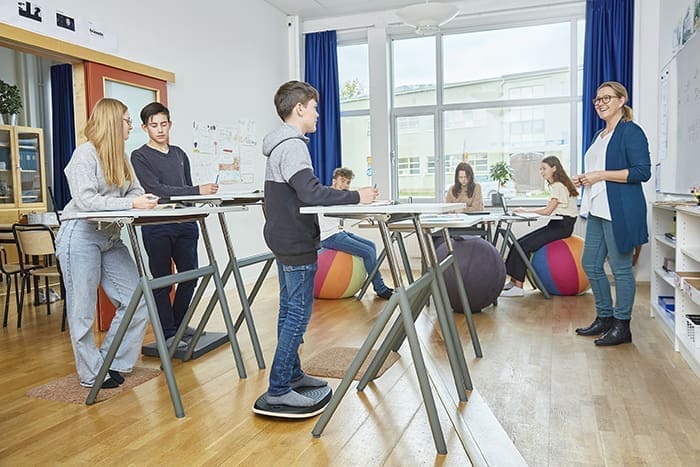

In our proposals, we have learned from the schools that have already furnished with Matting Interiors student desks and have taken the help of Brain enriched and Linda Bellvik – Linda works with entrepreneurial learning that stimulates curiosity and self-confidence and is an expert in generating working environments and climates where the brain thrives. For several years, Linda has built effective learning environments in schools and developed different environments in workplaces around Sweden – always with our most important raw material as a basis: the brain.

